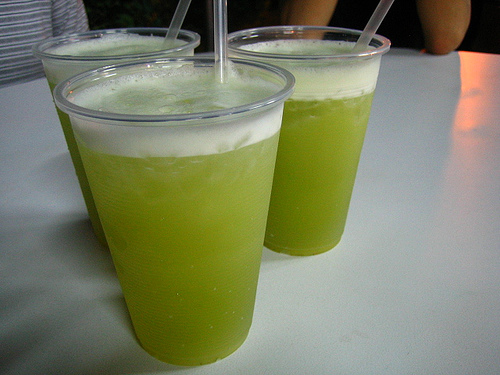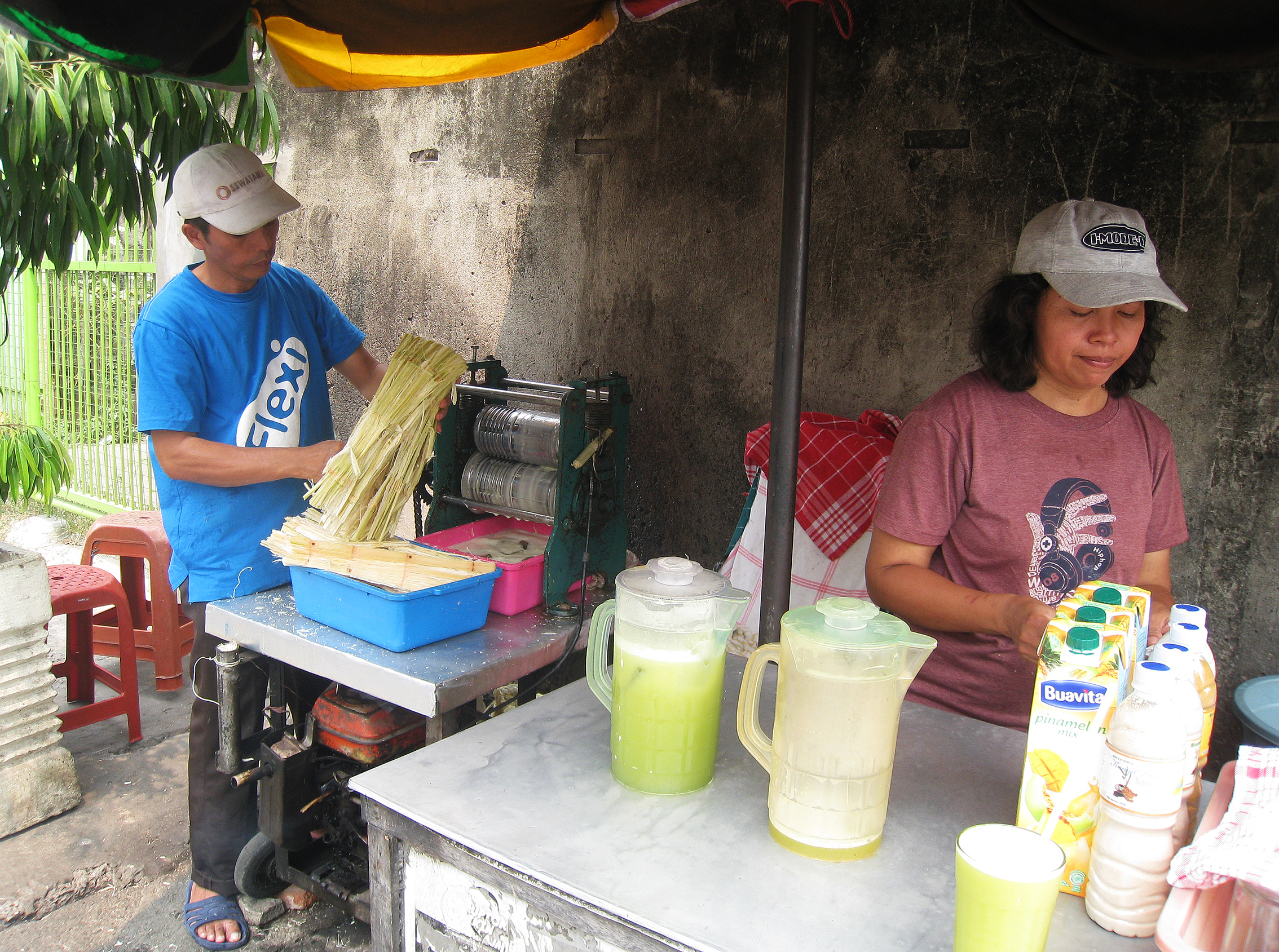Cane juice on:
[Wikipedia]
[Google]
[Amazon]

 Sugarcane juice is the liquid extracted from pressed
Sugarcane juice is the liquid extracted from pressed
 In Burma (Myanmar), sugarcane juice is called ''kyan ye'' (ကြံရည်) and is available throughout the country. It is typically brewed during the summertime, and optionally blended with lime, jujube, or orange.
In Burma (Myanmar), sugarcane juice is called ''kyan ye'' (ကြံရည်) and is available throughout the country. It is typically brewed during the summertime, and optionally blended with lime, jujube, or orange.
 In
In

 Sugarcane juice is the liquid extracted from pressed
Sugarcane juice is the liquid extracted from pressed sugarcane
Sugarcane or sugar cane is a species of (often hybrid) tall, perennial grass (in the genus '' Saccharum'', tribe Andropogoneae) that is used for sugar production. The plants are 2–6 m (6–20 ft) tall with stout, jointed, fibrous stalk ...
. It is consumed as a beverage in many places, especially where sugarcane is commercially grown, such as Southeast Asia
Southeast Asia, also spelled South East Asia and South-East Asia, and also known as Southeastern Asia, South-eastern Asia or SEA, is the geographical south-eastern region of Asia, consisting of the regions that are situated south of mainland ...
, the Indian subcontinent
The Indian subcontinent is a physiographical region in Southern Asia. It is situated on the Indian Plate, projecting southwards into the Indian Ocean from the Himalayas. Geopolitically, it includes the countries of Bangladesh, Bhutan, In ...
, North Africa
North Africa, or Northern Africa is a region encompassing the northern portion of the African continent. There is no singularly accepted scope for the region, and it is sometimes defined as stretching from the Atlantic shores of Mauritania in ...
, and Latin America
Latin America or
* french: Amérique Latine, link=no
* ht, Amerik Latin, link=no
* pt, América Latina, link=no, name=a, sometimes referred to as LatAm is a large cultural region in the Americas where Romance languages — languages derived ...
.
Sugarcane juice is obtained by crushing peeled sugar cane in a mill and is one of the main precursors of rum.
In the United States where processed sugarcane syrup is used as a sweetener in food and beverage manufacturing, "evaporated cane juice" is considered by the Food and Drug Administration
The United States Food and Drug Administration (FDA or US FDA) is a federal agency of the Department of Health and Human Services. The FDA is responsible for protecting and promoting public health through the control and supervision of food ...
(FDA) to be a misleading term for "sugar" on product labels because the FDA regards "juice" as a liquid derived from fruits or vegetables; the preferred term is "cane sugar".
Health risks
Raw sugar cane juice can be a health risk to drinkers due to the unhygienic conditions under which it is prepared in some countries with lower health standards. There are some diseases that can be transmitted by raw sugar-cane, such asLeptospirosis
Leptospirosis is a blood infection caused by the bacteria '' Leptospira''. Signs and symptoms can range from none to mild (headaches, muscle pains, and fevers) to severe ( bleeding in the lungs or meningitis). Weil's disease, the acute, sever ...
. In Brazil, sugarcane juice has been linked to cases of Chagas disease
Chagas disease, also known as American trypanosomiasis, is a tropical parasitic disease caused by ''Trypanosoma cruzi''. It is spread mostly by insects in the subfamily '' Triatominae'', known as "kissing bugs". The symptoms change over the co ...
, as sugarcane can contain traces of its responsible pathogen, ''Trypanosoma cruzi
''Trypanosoma cruzi'' is a species of parasitic euglenoids. Among the protozoa, the trypanosomes characteristically bore tissue in another organism and feed on blood (primarily) and also lymph. This behaviour causes disease or the likelihood o ...
'', left by infected bugs if not properly cleaned.
Drinking sugarcane juice in Egypt may pose health risks due to contamination with the mycotoxins, aflatoxin B1
Aflatoxin B1 is an aflatoxin produced by ''Aspergillus flavus'' and '' A. parasiticus''. It is a very potent carcinogen with a TD50 3.2 μg/kg/day in rats. This carcinogenic potency varies across species with some, such as rats and monkeys, seem ...
and fumonisin B1.
Countries
Burma (Myanmar)
 In Burma (Myanmar), sugarcane juice is called ''kyan ye'' (ကြံရည်) and is available throughout the country. It is typically brewed during the summertime, and optionally blended with lime, jujube, or orange.
In Burma (Myanmar), sugarcane juice is called ''kyan ye'' (ကြံရည်) and is available throughout the country. It is typically brewed during the summertime, and optionally blended with lime, jujube, or orange.
Egypt
In Egypt, sugarcane juice is known as ''asab'' and is sold in juice shops around the country. The largest juice shop in Egypt is in Saft El Laban,Giza
Giza (; sometimes spelled ''Gizah'' arz, الجيزة ' ) is the second-largest city in Egypt after Cairo and fourth-largest city in Africa after Kinshasa, Lagos and Cairo. It is the capital of Giza Governorate with a total population of 9.2 ...
. Egyptians also mix lemon with ''asab'' and let it ferment to produce a fermented variant of the drink. The most highly prized ''asab'' comes from Minya, Egypt
MinyaAlso spelled '' el...'' or ''al...'' ''...Menia, ...Minia'' or ''...Menya'' ( ar, المنيا ; ) is the capital of the Minya Governorate in Upper Egypt. It is located approximately south of Cairo on the western bank of the Nile River ...
.
India
Sugarcane juice is sold by street vendors throughout India. The vendors put the sugarcane in a machine, which presses and extracts the sugarcane juice out. Sugarcane juice is usually served with a dash of lime and/or ginger juice. It is a very popular drink, especially during summer months as a refreshing form of heat relief.Indonesia
Indonesia
Indonesia, officially the Republic of Indonesia, is a country in Southeast Asia and Oceania between the Indian and Pacific oceans. It consists of over 17,000 islands, including Sumatra, Java, Sulawesi, and parts of Borneo and New Gui ...
, sugarcane juice drink is called ''minuman sari tebu''. The iced sugar cane juice is called ''es tebu''. In Indonesian, ''tebu'' is sugarcane and ''es'' is ice. It is one of the traditional beverages commonly sold street-side in Indonesia. The sugarcane plant has been cultivated in Java since ancient times. The earliest record comes from a 9th-century inscription, dated from the Medang Mataram period, that describes a sweet drink called ''Nalaka Rasa'', which translates as "sugarcane juice".
The juice is extracted using a pressing machine to squeeze the sugary sap from sugarcane. The machine might be human-powered, or powered by a gasoline engine or electricity. The juice sold there is always served cold with ice cubes. Traditionally, it is sold throughout the country, especially among street vendors that set their stall on the street side. Today, cleaner vendors work in food court
A food court (in Asia-Pacific also called food hall or hawker centre) is generally an indoor plaza or common area within a facility that is contiguous with the counters of multiple food vendors and provides a common area for self-serve dinner. ...
s of malls and shopping centers.
Brazil
Sugarcane juice, known locally as ''caldo de cana'', is sold by street vendors in Brazil. In a process similar to that of the street vendors of India, machines are used to press the sugarcane and the juice is extracted. It is sometimes served with lemon or pineapple juice.United States
In the United States, where the FDA regulates the description ofingredient
An ingredient is a substance that forms part of a mixture (in a general sense). For example, in cooking, recipes specify which ingredients are used to prepare a specific dish. Many commercial product (business), products contain secret ingredie ...
s on food labels, the term "sugarcane juice" cannot be used because it misleads consumers to believe that cane juice is similar to fruit or vegetable juices. Instead, the FDA recommends "cane sugar" or another term determined by manufacturers who should "review the final guidance and consider whether their labeling terminology accurately describes the basic nature and characterizing properties of the sweetener used".
Madagascar
In the eastern region of Madagascar, sugarcane juice is fermented to make an inexpensive alcoholic beverage called ''betsa-betsa''. The drink is popular with locals because it is cheaper than beer.Pakistan
The government of Pakistan has declared sugarcane juice as the country's national drink.Vietnam
Sugarcane juice, called ''nước mía'' or ''mía đá'', is common inVietnam
Vietnam or Viet Nam ( vi, Việt Nam, ), officially the Socialist Republic of Vietnam,., group="n" is a country in Southeast Asia, at the eastern edge of mainland Southeast Asia, with an area of and population of 96 million, making ...
as a drink. Other fruit juices may be added to balance the sweetness, such as kumquat or chanh muối. It is sold at street stalls in plastic bags filled with ice or in disposable plastic cups.
See also
* List of Indian drinks * List of juicesReferences
{{DEFAULTSORT:Sugar Cane Juice Syrup Sugar Non-alcoholic drinks Brazilian drinks Burmese cuisine Cambodian drinks Indian drinks Articles containing video clips Juice